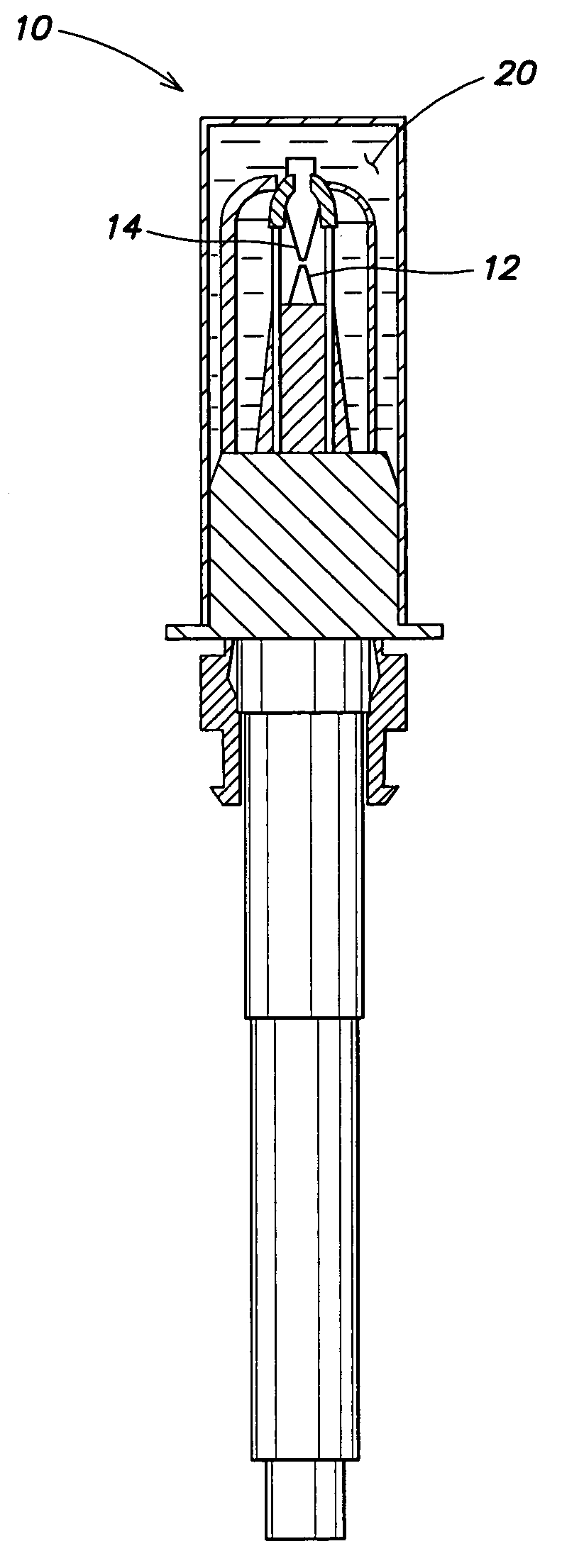Device for producing electrical discharges in an aqueous medium
a technology of electrical discharge and aqueous medium, which is applied in the direction of mechanical vibration separation, superimposed coating process, spark gap details, etc., can solve the problems of so-called electrode burnout, disadvantageous discharge behavior, burnt particles, etc., and achieve high corrosion resistance, improve the storability of the device, and mechanical workability
- Summary
- Abstract
- Description
- Claims
- Application Information
AI Technical Summary
Benefits of technology
Problems solved by technology
Method used
Image
Examples
second embodiment
[0017]In a second embodiment, the electrodes 12, 14 include a hot-worked steel with a vanadium content of greater than about 0.05% and a chromium content of more than 1% is used as the electrode material. It is especially advantageous to have a vanadium content in the range of between about 0.07–3.5%. The chromium component can be in the range of between about 1 to 15%. In one embodiment, the hot-worked steel has a tungsten component in the range of between about 1–10%.
third embodiment
[0018]In a third embodiment, the electrodes 12, 14 comprise a stainless steel with a chromium content of greater than about 12.5%. Advantageously, the chromium content is less than about 30%. Favorable properties result when the stainless steel has a nickel content within the range of between about 2–25%.
[0019]The above percentages are to be understood as percentages by weight. In the remaining components not listed, the usual alloy components in these material groups are found.
PUM
| Property | Measurement | Unit |
|---|---|---|
| electrical discharges | aaaaa | aaaaa |
| voltage | aaaaa | aaaaa |
| weight | aaaaa | aaaaa |
Abstract
Description
Claims
Application Information
 Login to View More
Login to View More - R&D
- Intellectual Property
- Life Sciences
- Materials
- Tech Scout
- Unparalleled Data Quality
- Higher Quality Content
- 60% Fewer Hallucinations
Browse by: Latest US Patents, China's latest patents, Technical Efficacy Thesaurus, Application Domain, Technology Topic, Popular Technical Reports.
© 2025 PatSnap. All rights reserved.Legal|Privacy policy|Modern Slavery Act Transparency Statement|Sitemap|About US| Contact US: help@patsnap.com


